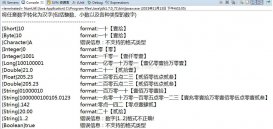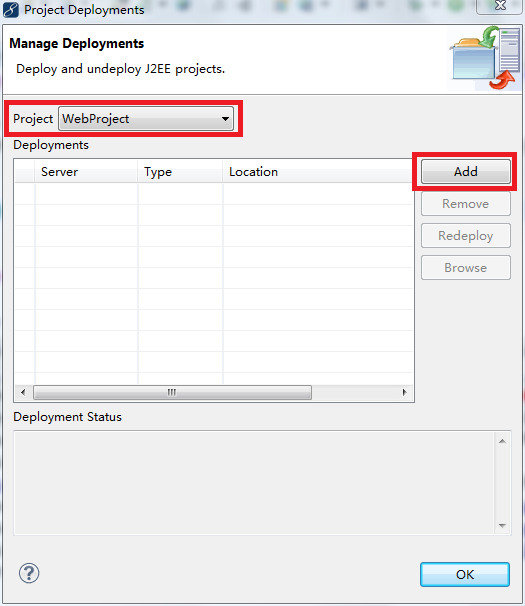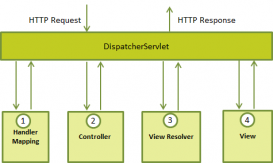一、对称加密算法
加密和解密使用相同密钥的加密算法。常用的算法包括DES、3DES、AES、DESX、Blowfish、RC4、RC5、RC6。
DES(Data Encryption Standard):数据加密标准,速度较快,适用于加密大量数据的场合。
3DES(Triple DES):是基于DES,对一块数据用三个不同的密钥进行三次加密,强度更高。
AES(Advanced Encryption Standard):高级加密标准,速度快,安全级别高【128位秘钥】;
二、非对称加密算法
加密和解密使用不同密钥的加密算法,也称为公私钥加密。常见的算法包括RSA、DSA(数字签名用)、ECC(移动设备用)、Diffie-Hellman、El Gamal。
RSA:由 RSA 公司发明,是一个支持变长密钥的公共密钥算法,需要加密的文件块的长度也是可变的;【建议1024位秘钥】
DSA:数字签名算法,是一种标准的 DSS(数字签名标准)
ECC:椭圆曲线密码编码学【建议160位秘钥】。
ECC VS RSA
1)抗攻击性强。相同的密钥长度,其抗攻击性要强很多倍。
2)计算量小,处理速度快。ECC总的速度比RSA、DSA要快得多。
3)存储空间占用小。ECC的密钥尺寸和系统参数与RSA、DSA相比要小得多,意味着它所占的存贮空间要小得多。这对于加密算法在IC卡上的应用具有特别重要的意义。
4)带宽要求低。当对长消息进行加解密时,三类密码系统有相同的带宽要求,但应用于短消息时ECC带宽要求却低得多。带宽要求低使ECC在无线网络领域具有广泛的应用前景。
三、散列算法
除法散列法 平方散列法 斐波那契(Fibonacci)散列法 随机数法
单向散列函数一般用于产生消息摘要,密钥加密等,常用的算法包括MD2、MD4、MD5、HAVAL、SHA、SHA-1、HMAC、HMAC-MD5、HMAC-SHA1。
MD5(Message Digest Algorithm 5):是RSA数据安全公司开发的一种单向散列算法,非可逆,相同的明文产生相同的密文。
SHA(Secure Hash Algorithm):可以对任意长度的数据运算生成一个160位的数值;
SHA-1 VS MD5 [二者均由MD4导出]
1)SHA-1摘要比MD5摘要长32位。使用强行技术,产生任何一个报文使其摘要等于给定报摘要的难度对MD5是2^(128)数量级的操作,而对SHA-1则是2^(160)数量级的操作。这样,SHA-1对强行攻击有更大的强度。
2)MD5易受密码分析的攻击,SHA-1显得不易受这样的攻击。
3)在相同的硬件上,SHA-1的运行速度比MD5慢。
四、加密算法的选择
1.单方密码存储建议直接使用散列算法(MD5即可,配合密码更新策略)。
2.内部信息加密传输建议使用对称加密效率跟高(AES)。
3.外部数据传输建议使用非对称加密,秘钥保存更安全(RSA)。
4.HTTPS高级用法:采用非对称加密算法管理对称算法的密钥,然后用对称加密算法加密数据,这样我们就集成了两类加密算法的优点,既实现了加密速度快的优点,又实现了安全方便管理密钥的优点。
五、上源码
5.1 AES对称加密
- import lombok.extern.slf4j.Slf4j;
- import org.apache.commons.codec.binary.Base64;
- import org.apache.commons.lang3.ArrayUtils;
- import org.springframework.util.StringUtils;
- import javax.crypto.Cipher;
- import javax.crypto.SecretKey;
- import javax.crypto.spec.SecretKeySpec;
- import java.nio.charset.StandardCharsets;
- /**
- * <p>
- * AES加密工具
- * </p>
- *
- * @author ocean
- * @version 1.0.0
- * @date 2023/5/4 14:51
- */
- @Slf4j
- public class AESUtils {
- // 秘钥 16
- private static final String SECRET_KEY = "1111111111111111";
- // 秘钥 24
- //private static final String SECRET_KEY = "111111111111111122222222";
- // 秘钥 32
- //private static final String SECRET_KEY = "11111111111111112222222233333333";
- // 算法
- private static final String ALGORITHM = "AES";
- private static final String UTF8 = StandardCharsets.UTF_8.name();
- /**
- * 字符串加密
- *
- * @param message 明文字符串
- * @param secretKey 秘钥
- * @return 加密字符串
- */
- public static String encryption(String message, String secretKey) {
- if (!StringUtils.hasLength(message)) {
- log.error("encryption message should not be null or empty.");
- }
- byte[] encodeBytes = encryption(message.getBytes(StandardCharsets.UTF_8), secretKey);
- return Base64.encodeBase64String(encodeBytes);
- }
- /**
- * 字符串加密
- *
- * @param messageBytes 明文字节数组
- * @param secretKey 秘钥
- * @return 加密字节数组
- */
- public static byte[] encryption(byte[] messageBytes, String secretKey) {
- if (ArrayUtils.isEmpty(messageBytes)) {
- log.error("encryption message should not be empty.");
- }
- if (!StringUtils.hasLength(secretKey)) {
- log.error("secretKey {}, encryption key should not be null or empty.", secretKey);
- }
- Cipher cipher = getCipher(secretKey, Cipher.ENCRYPT_MODE);
- byte[] encryptionBytes = null;
- try {
- encryptionBytes = cipher.doFinal(messageBytes);
- } catch (Exception e) {
- log.error("encryption fail. ", e);
- }
- return encryptionBytes;
- }
- /**
- * 字符串加密
- *
- * @param encryptionMessage 加密字符串
- * @param secretKey 秘钥
- * @return 明文字符串
- */
- public static String decrypt(String encryptionMessage, String secretKey) {
- if (!StringUtils.hasLength(encryptionMessage)) {
- log.error("decrypt encryptionMessage should not be null or empty.");
- }
- byte[] decodeBytes = decrypt(Base64.decodeBase64(encryptionMessage.getBytes(StandardCharsets.UTF_8)), secretKey);
- return new String(decodeBytes, StandardCharsets.UTF_8);
- }
- /**
- * 字符串加密
- *
- * @param encryptedBytes 加密字节数组
- * @param secretKey 秘钥
- * @return 明文字节数组
- */
- public static byte[] decrypt(byte[] encryptedBytes, String secretKey) {
- if (ArrayUtils.isEmpty(encryptedBytes)) {
- log.error("decrypt encryptedBytes should not be empty.");
- }
- if (!StringUtils.hasLength(secretKey)) {
- log.error("secretKey {}, decrypt key should not be null or empty.", secretKey);
- }
- Cipher cipher = getCipher(secretKey, Cipher.DECRYPT_MODE);
- byte[] decodeBytes = null;
- try {
- decodeBytes = cipher.doFinal(encryptedBytes);
- } catch (Exception e) {
- log.error("decrypt fail. ", e);
- }
- return decodeBytes;
- }
- private static Cipher getCipher(String key, int mode) {
- Cipher cipher = null;
- SecretKey secretKey;
- try {
- cipher = Cipher.getInstance(ALGORITHM);
- byte[] keyBytes = key.getBytes(UTF8);
- secretKey = new SecretKeySpec(keyBytes, ALGORITHM);
- cipher.init(mode, secretKey);
- } catch (Exception e) {
- log.error("getAESCipher fail. ", e);
- }
- return cipher;
- }
- public static void main(String[] args) {
- String data = "ocean测试!@#";
- log.info("AES秘钥长度只能为16、24、32:{}", SECRET_KEY.getBytes(StandardCharsets.UTF_8).length);
- String encryptionData = encryption(data, SECRET_KEY);
- log.info("加密后:{}", encryptionData);
- String decryptData = decrypt(encryptionData, SECRET_KEY);
- log.info("解密后:{}", decryptData);
- }
- }
5.2 RSA非对称加密
PSCK#8 - PSCK#1org.bouncycastle bcprov-jdk15on 1.52
import java.io.StringWriter;
import java.security.KeyFactory;
import java.security.KeyPair;
import java.security.KeyPairGenerator;
import java.security.NoSuchAlgorithmException;
import java.security.PrivateKey;
import java.security.PublicKey;
import java.security.Signature;
import java.security.interfaces.RSAPrivateKey;
import java.security.interfaces.RSAPublicKey;
import java.security.spec.InvalidKeySpecException;
import java.security.spec.PKCS8EncodedKeySpec;
import java.security.spec.X509EncodedKeySpec;
import java.util.HashMap;
import java.util.Map;
import javax.crypto.Cipher;
import org.apache.commons.codec.binary.Base64;
import org.bouncycastle.asn1.ASN1Encodable;
import org.bouncycastle.asn1.ASN1Primitive;
import org.bouncycastle.asn1.pkcs.PrivateKeyInfo;
import org.bouncycastle.asn1.x509.SubjectPublicKeyInfo;
import org.bouncycastle.util.io.pem.PemObject;
import org.bouncycastle.util.io.pem.PemWriter;
import sun.misc.BASE64Decoder;
import sun.misc.BASE64Encoder;
public class RsaUtils {
public static final int KEY_SIZE = 2048;
public static final String ALGORITHM = "RSA";
public static final String PUBLIC_KEY = "xxxxpublicKeyxxxx";
public static final String PRIVATE_KEY = "xxxxprivateKeyxxxx";
public static final String CLEAR_TEXT_STRING = "明文字符串";
public static BASE64Encoder encoder = new BASE64Encoder();
public static BASE64Decoder decoder = new BASE64Decoder();
public static void main(String[] args) throws Exception {
// PSCK#8
Map keyMap = RsaUtil.generateKeyBytes();
System.out.println("PSCK#8-PRIVATEKEY:"+ keyMap.get(RsaUtil.PRIVATE_KEY));
System.out.println("PSCK#8-PUBLICKEY:" + keyMap.get(RsaUtil.PUBLIC_KEY));
PublicKey publicKey8 = RsaUtil.restorePublicKey(keyMap.get(RsaUtil.PUBLIC_KEY));
PrivateKey privateKey8 = RsaUtil.restorePrivateKey(keyMap.get(RsaUtil.PRIVATE_KEY));
// ============公钥加密-私钥解密============
Cipher cipher = Cipher.getInstance(ALGORITHM);
cipher.init(Cipher.ENCRYPT_MODE, publicKey8);
String messageEn = Base64.encodeBase64String(cipher.doFinal(CLEAR_TEXT_STRING.getBytes("UTF-8")));
System.out.println(CLEAR_TEXT_STRING + " 加密后的字符串为:" + messageEn);
cipher.init(Cipher.DECRYPT_MODE, privateKey8);
String messageDe = new String(cipher.doFinal(Base64.decodeBase64(messageEn.getBytes("UTF-8"))));
System.out.println("还原后的字符串为:" + messageDe);
// ============公钥加密-私钥解密============
// ============PSCK#8>PSCK#1============
byte[] privBytes = privateKey8.getEncoded();
PrivateKeyInfo pkInfo = PrivateKeyInfo.getInstance(privBytes);
ASN1Encodable encodable = pkInfo.getPrivateKey();
ASN1Primitive primitive = encodable.toASN1Primitive();
byte[] privateKeyPKCS1 = primitive.getEncoded();
PemObject pemObject = new PemObject("RSA PRIVATE KEY", privateKeyPKCS1);
StringWriter stringWriter = new StringWriter();
PemWriter pemWriter = new PemWriter(stringWriter);
pemWriter.writeObject(pemObject);
pemWriter.close();
String pemString = stringWriter.toString();
System.out.println("PSCK#1-PRIVATEKEY:" + pemString);
byte[] pubBytes = publicKey8.getEncoded();
SubjectPublicKeyInfo spkInfo = SubjectPublicKeyInfo
.getInstance(pubBytes);
ASN1Primitive punlic = spkInfo.parsePublicKey();
byte[] publicKeyPKCS1 = punlic.getEncoded();
PemObject punlicpemObject = new PemObject("RSA PUBLIC KEY",
publicKeyPKCS1);
StringWriter punlicstringWriter = new StringWriter();
PemWriter punlicpemWriter = new PemWriter(punlicstringWriter);
punlicpemWriter.writeObject(punlicpemObject);
punlicpemWriter.close();
String publicemString = punlicstringWriter.toString();
System.out.println("PSCK#8-PUBLICKEY:" + publicemString);
// ============PSCK#8>PSCK#1============
// ============私钥签名公钥验签============
// PSCK#8-PRIVATEKEY 私钥签名
Signature signature = Signature.getInstance("SHA256WithRSA");
signature.initSign(privateKey8);
signature.update(CLEAR_TEXT_STRING.getBytes());
byte[] signed = signature.sign();
String sign = encoder.encode(signed);
// PSCK#8-PUBLICKEY 公钥验签
signature.initVerify(publicKey8);
signature.update(CLEAR_TEXT_STRING.getBytes());
boolean verify = signature.verify(decoder.decodeBuffer(sign));
System.out.println("CLEAR_TEXT_STRING:" + CLEAR_TEXT_STRING);
System.out.println("SIGN:" + sign.replaceAll("
|
", ""));
System.out.println(verify);
// ============私钥签名公钥验签============
}
/**
* 公私钥生成
*
* @return
*/
public static Map generateKeyBytes() {
try {
KeyPairGenerator keyPairGenerator = KeyPairGenerator.getInstance(ALGORITHM);
keyPairGenerator.initialize(KEY_SIZE);
KeyPair keyPair = keyPairGenerator.generateKeyPair();
RSAPublicKey publicKey = (RSAPublicKey) keyPair.getPublic();
RSAPrivateKey privateKey = (RSAPrivateKey) keyPair.getPrivate();
Map keyMap = new HashMap();
keyMap.put(PUBLIC_KEY, new String(Base64.encodeBase64(publicKey.getEncoded())));
keyMap.put(PRIVATE_KEY, new String(Base64.encodeBase64(privateKey.getEncoded())));
return keyMap;
} catch (NoSuchAlgorithmException e) {
e.printStackTrace();
}
return null;
}
/**
* 公钥生成
* @param key
* @return
*/
public static PublicKey restorePublicKey(String key) {
X509EncodedKeySpec x509EncodedKeySpec = new X509EncodedKeySpec(Base64.decodeBase64(key));
try {
KeyFactory factory = KeyFactory.getInstance(ALGORITHM);
PublicKey publicKey = factory.generatePublic(x509EncodedKeySpec);
return publicKey;
} catch (NoSuchAlgorithmException | InvalidKeySpecException e) {
e.printStackTrace();
}
return null;
}
/**
* 私钥生成
* @param key
* @return
*/
public static PrivateKey restorePrivateKey(String key) {
PKCS8EncodedKeySpec pkcs8EncodedKeySpec = new PKCS8EncodedKeySpec(Base64.decodeBase64(key));
try {
KeyFactory factory = KeyFactory.getInstance(ALGORITHM);
PrivateKey privateKey = factory
.generatePrivate(pkcs8EncodedKeySpec);
return privateKey;
} catch (NoSuchAlgorithmException | InvalidKeySpecException e) {
e.printStackTrace();
}
return null;
}
}
5.3 MD5散列算法
import lombok.extern.slf4j.Slf4j;
import java.security.MessageDigest;
@Slf4j
public class MD5Util {
public static final int SIZE_FACTOR = 2;
private static final String[] hexDigits = {"0", "1", "2", "3", "4", "5", "6", "7", "8", "9", "a", "b", "c", "d", "e", "f"};
public static String MD5Encode(String origin, String charsetname) {
String resultString = null;
try {
resultString = origin;
MessageDigest md = MessageDigest.getInstance("MD5");
if (charsetname == null || "".equals(charsetname)) {
resultString = byteArrayToHexString(md.digest(resultString.getBytes()));
} else {
resultString = byteArrayToHexString(md.digest(resultString.getBytes(charsetname)));
}
} catch (Exception exception) {
log.error("MD5Util MD5Encode error", exception);
}
return resultString;
}
private static String byteArrayToHexString(byte[] b) {
StringBuffer resultSb = new StringBuffer();
for (int i = 0; i < b.length; i++) {
resultSb.append(byteToHexString(b[i]));
}
return resultSb.toString();
}
private static String byteToHexString(byte b) {
int n = b;
if (n < 0) {
n += 256;
}
int d1 = n / 16;
int d2 = n % 16;
return hexDigits[d1] + hexDigits[d2];
}
public static String encode(String str) {
try {
byte[] hash = MessageDigest.getInstance("MD5").digest(str.getBytes("utf-8"));
StringBuilder hex = new StringBuilder(hash.length * SIZE_FACTOR);
for (byte b : hash) {
hex.append(String.format("%02x", b));
}
return hex.toString();
} catch (Exception e) {
log.error("MD5 encode error for {}, error is {}", str, e.getMessage(), e);
}
return null;
}
}
到此这篇关于Java 加解密工具类的文章就介绍到这了,更多相关内容请搜索服务器之家以前的文章或继续浏览下面的相关文章希望大家以后多多支持服务器之家!
原文地址:https://blog.csdn.net/qq_34253002/article/details/131491945
















